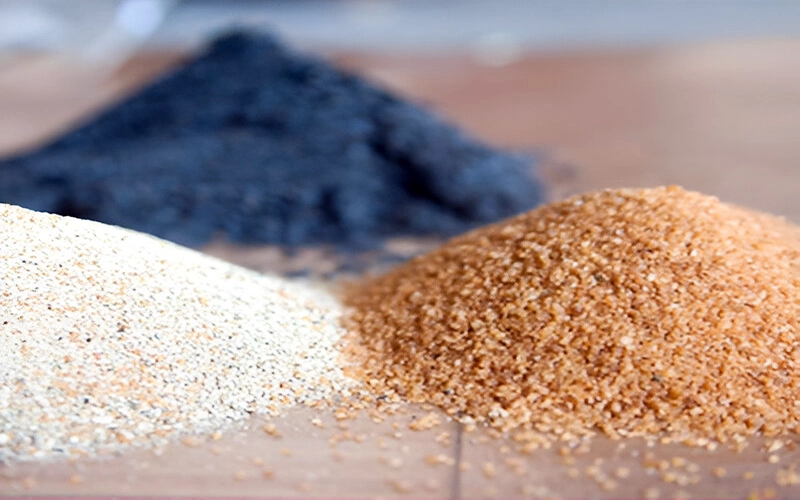Silica sand, also known as industrial sand or quartz sand, is a naturally occurring granular material composed primarily of silicon dioxide (SiO₂), usually in the form of quartz. It is one of the most abundant minerals on Earth and is found in a wide range of geological environments, including riverbeds, beaches, deserts, and sedimentary rock formations. The purity, grain size, and shape of silica sand determine its suitability for various industrial applications.
One of the most significant uses of silica sand is in the glass manufacturing industry. Due to its high silica content and low levels of impurities like iron, silica sand is the primary ingredient in the production of all types of glass, including container glass, flat glass, fibreglass, and speciality glass used in electronics and solar panels. The quality and clarity of glass are heavily dependent on the purity of the silica sand used.
Another major application is in foundries, where silica sand is used to create moulds and cores for metal casting. Its high melting point, strength, and resistance to thermal shock make it ideal for shaping and supporting molten metal during the casting process. In construction, silica sand is used as a key component in concrete, mortar, and other building materials. It improves strength, durability, and resistance to weathering.
Silica sand is also essential in hydraulic fracturing (fracking), where it serves as a proppant. During fracking, silica sand is injected into underground rock formations to keep fractures open, allowing oil and gas to flow more freely. The sand must be hard, round, and able to withstand high pressure without breaking apart—qualities that high-purity silica sand naturally possesses.
In sports and recreation, silica sand is used in golf course bunkers, beach volleyball courts, synthetic turf systems, and playgrounds. Its texture and drainage capabilities make it a preferred choice for these applications. Additionally, it’s used as a raw material in the chemical industry, in water filtration, and as an abrasive in sandblasting.

Silica sand is generally mined through open-pit operations and processed to remove impurities. The demand for high-purity silica sand is increasing, especially for applications like semiconductors and solar panels, where even trace contaminants can be detrimental.
In conclusion, silica sand is a versatile, durable, and highly sought-after industrial mineral. Its physical and chemical properties make it indispensable in a wide range of industries, from glassmaking and construction to energy and electronics.
Silica sand is used in the making of glass and creating moulds and castings in industrial processing. This sand is also used in sandblasting, adding texture to slick roads and as a raw material in the production of ceramics and equestrian surfaces.

| Element | SiO2 | AL2O3 | Fe2O3 | CaO | Na2O | K2O | MgO | L.O.I |
|---|---|---|---|---|---|---|---|---|
| Percent | 97-99 | 0.4 - 1.7 | 0.2 - 0.6 | 0.07 - 0.2 | 0 - 0.01 | 0.02 - 0.06 | 0 | 0.01 - 0.35 |